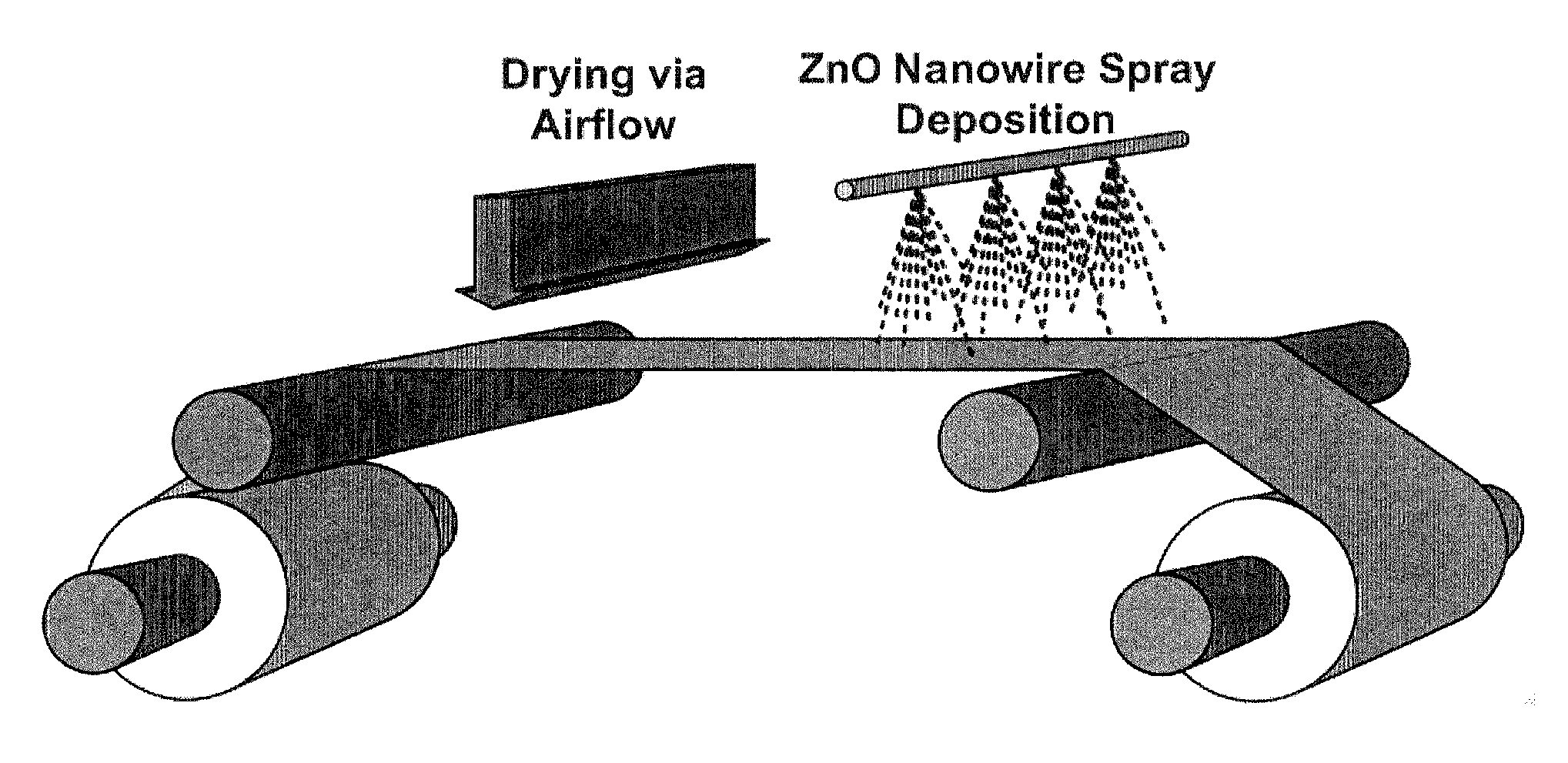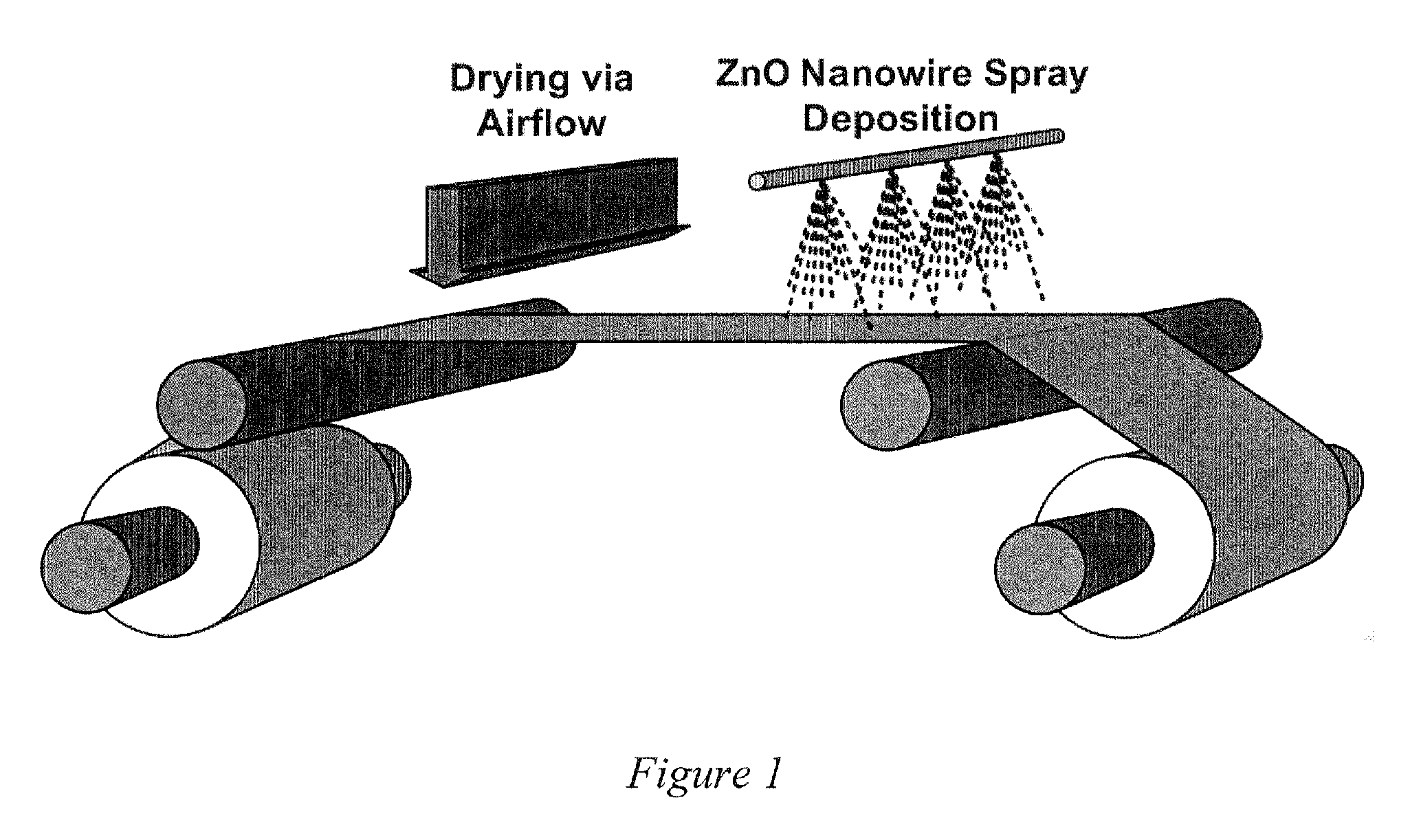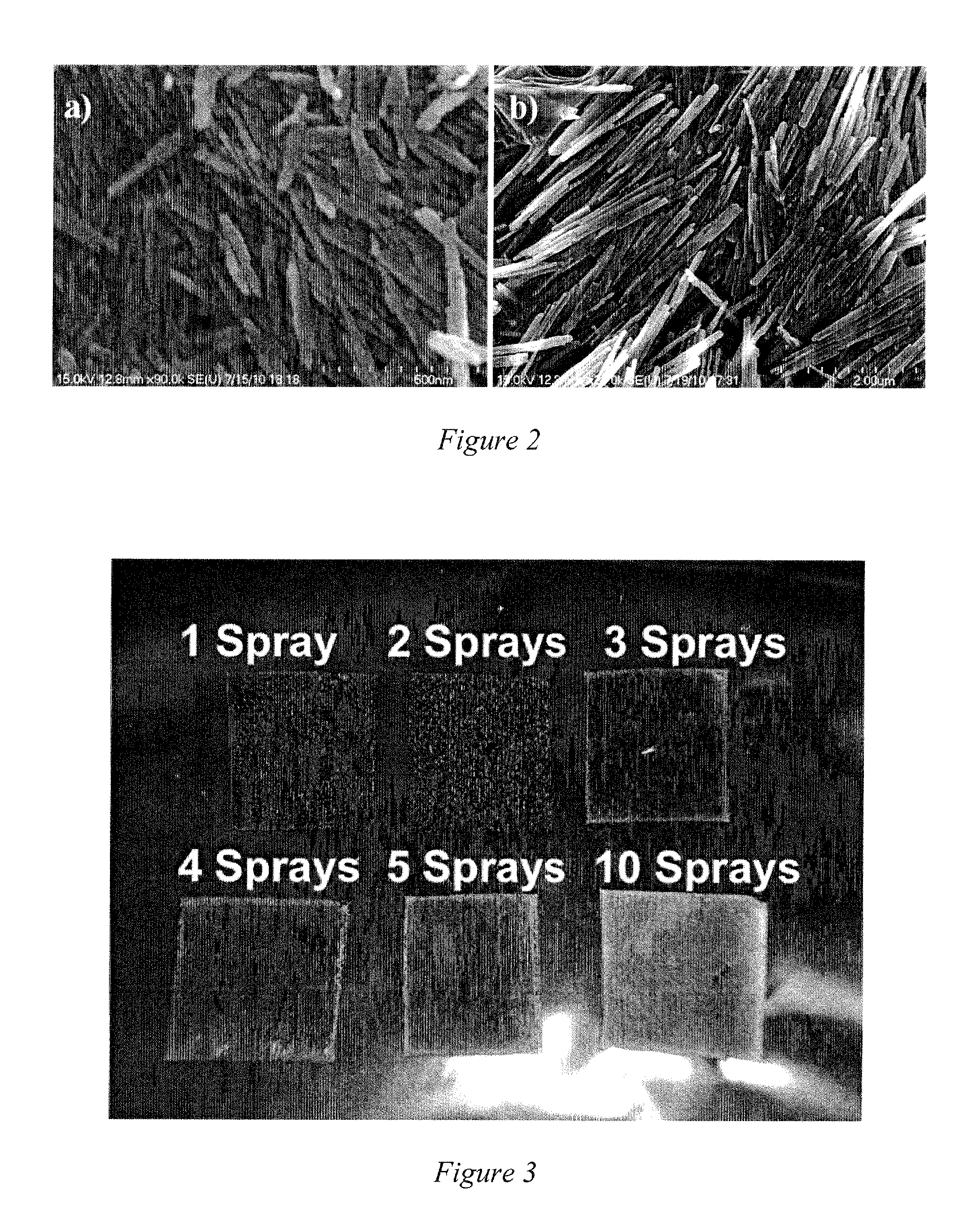Interlaminer reinforced composite structures
a technology of reinforced composites and interlocking, which is applied in the direction of paper/cardboard containers, ceramic layered products, transportation and packaging, etc., can solve the problems of composite failure, composite strength reduction, composite failure, etc., and achieve the effect of promoting mechanical interlocking
- Summary
- Abstract
- Description
- Claims
- Application Information
AI Technical Summary
Benefits of technology
Problems solved by technology
Method used
Image
Examples
Embodiment Construction
[0023]Embodiments of the invention are directed to interlaminar reinforced laminar composites that include a dispersion of nanowires, or other low-dimensional nanoparticles, at the interface of at least two adjacent laminae of the laminar composite where one or more binding agents binds the nanowires to the resin of adjacent laminae at their interface. The nanowires improve the interlaminar strength while maintaining the composite's in-plane properties. In embodiments of the invention, laminar composites having interlaminar reinforcement are formed by the deposition of nanowires on a lamina surface. In embodiments of the invention, the nanowires have been treated with a binding agent that is chosen to bind to the nanowire surface with the polymer matrix of the composite during cure of the thermosetting resin when forming the continuous matrix of the composite. Treatment by the binding agent results in binding that is chemical or physical in nature. For example, binding can be by cov...
PUM
| Property | Measurement | Unit |
|---|---|---|
| Thickness | aaaaa | aaaaa |
| Thickness | aaaaa | aaaaa |
| Diameter | aaaaa | aaaaa |
Abstract
Description
Claims
Application Information
 Login to View More
Login to View More - R&D
- Intellectual Property
- Life Sciences
- Materials
- Tech Scout
- Unparalleled Data Quality
- Higher Quality Content
- 60% Fewer Hallucinations
Browse by: Latest US Patents, China's latest patents, Technical Efficacy Thesaurus, Application Domain, Technology Topic, Popular Technical Reports.
© 2025 PatSnap. All rights reserved.Legal|Privacy policy|Modern Slavery Act Transparency Statement|Sitemap|About US| Contact US: help@patsnap.com



